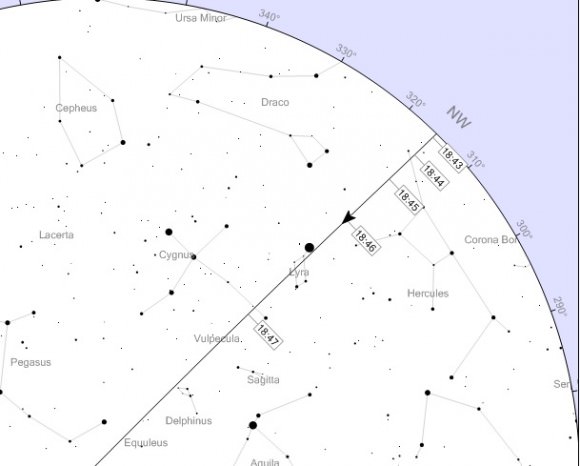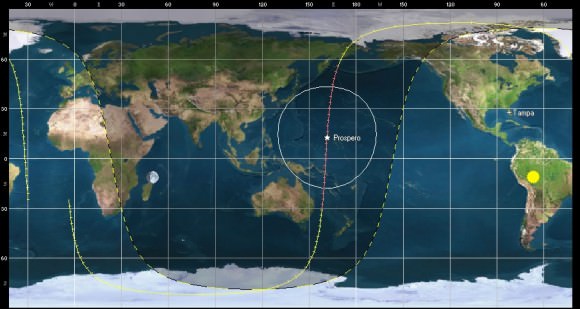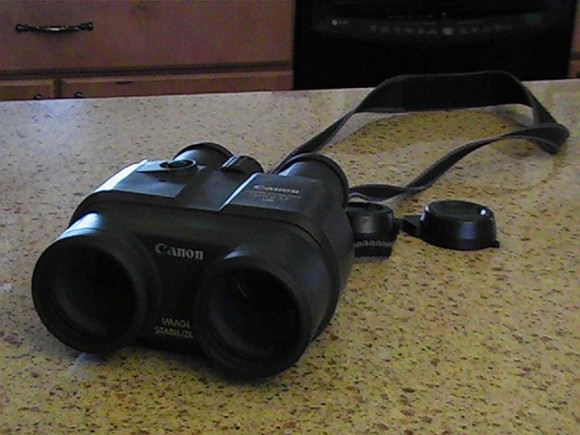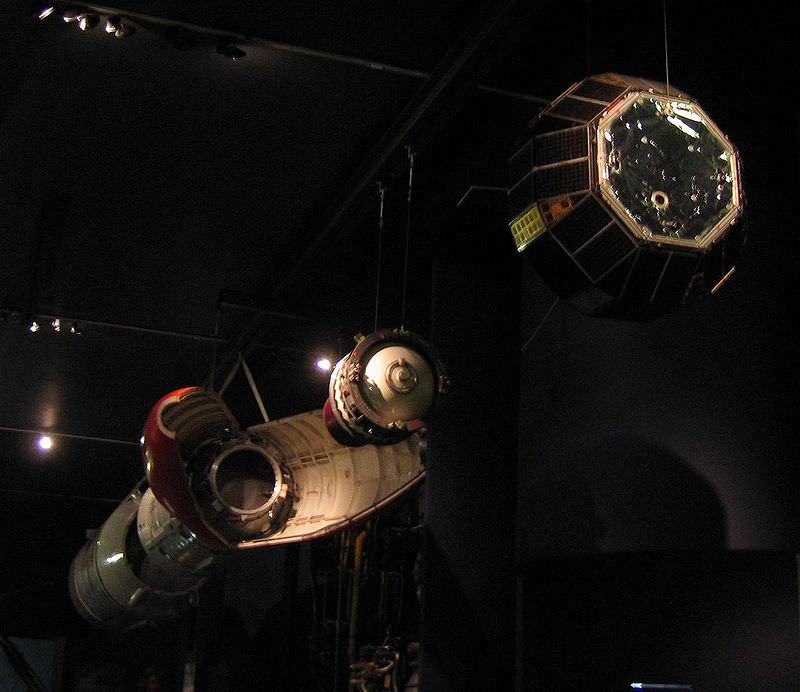A relic of the early Space Age turns 44 years old this week.
The United Kingdom’s first and only successful space launch using a UK-built rocket is still visible in low Earth orbit today, if you know exact where and how to look for it.
Launched atop a 3-stage Black Arrow R3 rocket on October 28th, 1971 from the Woomera launch station in the Australian outback, Prospero (sometimes also referred to simply as the X-3) was designed to test key communications satellite technologies.
Prospero wasn’t the first satellite fielded by the United Kingdom–that credit goes to the Ariel 1 satellite launched atop a Thor DM-19 Delta rocket by the United States from Cape Canaveral on April 26th, 1962—but Prospero was notable as part of a program cut short in its early stages.

The Black Arrow project from which Prospero was born was cancelled shortly after the launch, making the X-3 the only successful mission fielded by the program (X-2 failed to achieve orbit due to an early shut-down of the stage 2 rocket). Prospero almost didn’t make it as well, as the final Waxwing stage hit the satellite upon deployment, taking one of Prospero’s four radio antennae clean off!
How to spot fainter satellites
Unlike watching for bright passes of naked eye objects in low Earth orbit such as the International Space Station, hunting for binocular satellites such as Prospero takes careful planning. Our tried and true technique is not unlike the method recently described on Universe Today to hunt for near Earth grazers such as the Halloween asteroid 2015 TB 145. In stakeout mode, you’ll need to know exactly when Prospero passes near a bright object, such as a star or planet.
Heavens-Above is a great resource, and catalogs every satellite back through the early Space Age. And what’s really nifty is that Heavens-Above will plot the passage of the satellite showing the timing of the pass against the sky against the background of constellations and stars for your specific location.

If you have Space-Track access, you can also download the TLEs (Two Line Elements) for a particular satellite for manual entry into a program such as Starry Night or Orbitron to forecast passes. You’ll be aiming your binoculars at the target star Project Moonwatch-style at the appointed time, and simply waiting for the satellite to drift by. For precise timing, we like to listen to WWV radio broadcasting the time (in Universal or Greenwich Mean/Zulu Time) out of Fort Collins Colorado on AM shortwave 5000, 10000, 15000 and 20000 Hz. WWV radio calls out the time at the top of each minute, with time ticks for each second, allowing the observer to keep eyes on the sky continuously. Just which WWV station comes in clearest can vary after sunset, as the ionosphere changes in terms of radio reflectivity at dusk.

We tracked down a good pass on the errant ‘space tool bag’ lost by International Space Station astros back in 2008 using this method once it was assigned an individual NORAD ID number… there it was, a lost tool satchel with a date with a fiery reentry destiny, drifting right by the bright star Spica at the appointed time.
Prospects for Prospero
Radio operators tracked Prospero for decades on transmission frequency 137.560 MHz until 2004, eight years past its official deactivation in 1996. As of this writing, there aren’t any official future attempts to contact Prospero in the works, though it’s certainly possible for a motivated party to do in theory… Prospero isn’t expected to reenter until 2070, and perhaps it’ll last until its centenary in space.
For latitudes 30-40 degrees north, good viewing prospects for Prospero start up again around December 20th of this year at dusk. At its brightest on a pass straight overhead through the observer’s zenith, expect Prospero to reach about +8 magnitude in brightness, well within range of binoculars. Prospero orbits Earth once every 103 minutes in a 527 by 1,304 kilometre orbit, inclined 82 degrees relative to the Earth’s equator. Prospero’s NORAD ID COSPAR designator is 1971-093A catalog number (05580).

Other relics of the Space Age are also visible in backyard near you, including:
The Vanguards: launched in starting in 1958 by the United States, The three Vanguard satellites represent the oldest bits of human artifacts in Earth orbit, and they aren’t due for reentry for another two centuries.
Allouette-1: The first Canadian satellite, launched from Vandenberg AFB in 1962 and still in orbit.
Tracking relics of the Space Age brings home the personal relevance of early space history. Looking further out towards satellites in geostationary orbit, we are seeing artifacts that may long withstand the tests of time and become the solitary testaments of our current civilization to a far off future era.
-Got a favorite relic of the Space Age you’d like us to track down? Let us know!


Fascinating article. I’m always interested in deactivated old space probes.
Can they be contacted again? If so, how have their systems and solar cells held up to decades of harsh space environment? If some of the science instruments still work, and the original operators don’t care anymore, can control of the probe be turned over to university teams? If so, maybe there’s no need to launch new cubesats with primitive systems if there’s a still-working antique still up there that can do similar things?
Very good idea mewo a great way to recycle…
Unfortunately for mewo’s quite good idea, most of these birds were used right up to the point where they weren’t usable anymore, that is to say, right up to the point that they had no fuel left for either maneuvering or orientation changes (to turn solar panels into the Sun, e.g.). Even if we could contact them, chances are they won’t have the fuel/power to do anything at all, let alone what we’d want them to do.
More recently, many satellites are directed to use the last of their fuel to either de-orbit, thus clearing a large chunk of potential space debris from orbit in a controlled fashion, or else to go into a “parking” or “graveyard” orbit where their lack of mobility won’t render them a danger to other still-operating spacecraft. Which reminds me…
Hey, Dave, when do we get to read that article you were going to do a while back on parking, graveyard & other non-traditional orbits? Has that been done yet on UT, or did I just miss it?
Sure, I agree that many (probably most), of the defunct space probes are no longer contactable, for a whole range of reasons. Some will be just plain broken, others have been turned off deliberately and permanently, others can no longer point their solar panels at the sun because they have no fuel left, others might still be communicative but have no working science instruments. I don’t know how many are just dormant instead of dead. The best bet, I think, is the spin-stabilised ones with solar panels all around the body like Prospero, or ISEE-3, or Pioneers 6-8.
Could be right. Also, just to be clear, even though I think it won’t work for most, I feel the fact that it may work for a few is enough to make your idea well worth the effort.
Nope… I haven’t written said post yet, will throw it in the idea file for the coming few months.
Have observed this satellite many times and it’s launch vehicle Black Arrow. Right now spend a lot of my satellite observing time on nuclear powered satellites and their reactors still on orbit. Seems I remember there is also a Ham Radio Oscar satellite that no longer has battery power but has been reported turning on and working when in daylight. Also the last I heard the nuclear powered satellite Triad 1 SPC#6173 was still transmitting but have not heard in a long time if anyone has tried to communicate with it or even listens for it any more. Have observed it in the last year. Also of historical interest is the last of the great satelloons fragments still on orbit Pageos 1 spc# 2253 which is not real hard to observe with a telescope. Hey for me it’s like getting to see space history fly by. Oh for those who my be interested there is a very cool free paper model on Neils papermodels of the Black Arrow launch vehicle and a small Prospero model to go along with it. http://www.nielspapermodels.com/BA.htm
Awesome… great link and resource.
David you and others may wish to also check out the great resource of free paper spacecrafts and rockets models at Lower Hudson Valley Challenger Center . Some of the paper models there are from some of the world’s best space paper modelers.
http://jleslie48.com/gallery_models.html
Wow. Really lovely models out there.
I remember that I build paper models as a kid, decades ago. Wasn’t aware that there is still an active scene for such things these days. And for amazing sowjet spacecrafts. Guess I have to get a scalpell, a tube of glue and dive into that adventure again